Todoist vs. TickTick Summary
Who is Todoist for?
Todoist is one of the most feature-rich to-do app currently available. Unlike other to-do apps, Todoist is entirely focused around adding, managing and completing tasks.
By contrast, other to-do apps combine task management with other features such as habit tracking or Pomodoro timers.
Thus, Todoist is primarily designed for users that want a to-do app with as many features as possible.
Who is TickTick for?
TickTick is a feature rich task management app that also integrates productivity features found in other apps: habit tracking, note taking, Eisenhower matrix, Pomodoro timers etc.
TickTick is ideal for people who need a generalist to-do app that can do many things at once and thus replace multiple other apps such as habit trackers or simple note apps.
Ease of use
Todoist ease of use
Todoist’s interface is clean and minimalistic, only showing you a few buttons and navigation menus.
The first screen you see when opening the app is called the “Inbox”. From there you can add, edit or complete tasks.
You can also better organize the Inbox by adding different sections to it, such as Work, Parenting or more.
What we like about Todoist’s interface is that the buttons for “View” and “Options” reveal a lot of powerful functionality such as multiple filter types, sorting options, activity logs, comments etc.
One feature we really liked was the ability to select multiple tasks at once and modify them by adding tags, labels, changing priority levels or moving them to different projects or sections.
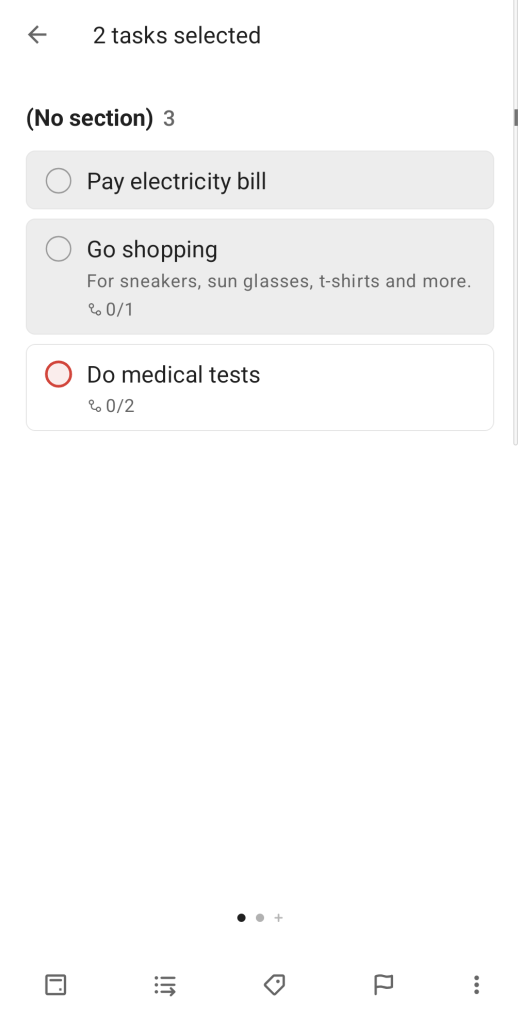
Almost no other task management app has this, so you have to edit tasks one by one.
Overall, Todoist has a simple interface, but it elegantly places its settings options in multiple, relevant locations.
This allows you to learn Todoist at your own pace, without feeling overwhelmed by the number of settings and options available.
TickTick ease of use
TickTick’s user interface is simple and straightforward, but is also very modular and easy to configure.
For example, you can customize the “Add task” button itself. You can change what features are available to customize the task: tags, convert to note, add image, set priority etc.
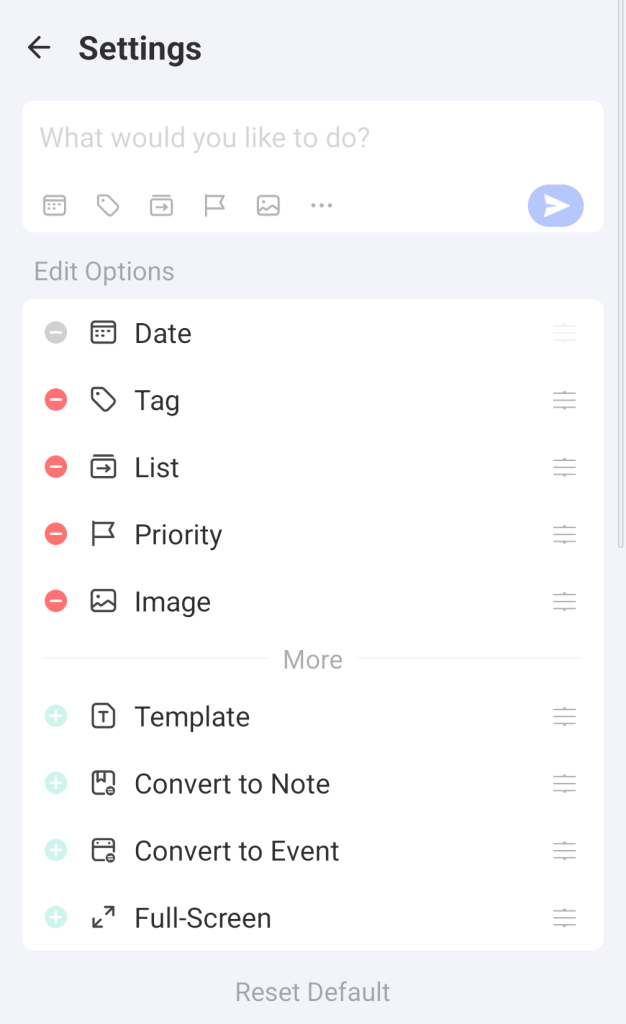
Similarly, you can also customize what features you want to use (or not use) in the bottom navigation bar: calendar view, Pomodoro timer, habit tracker, search function, countdown etc.
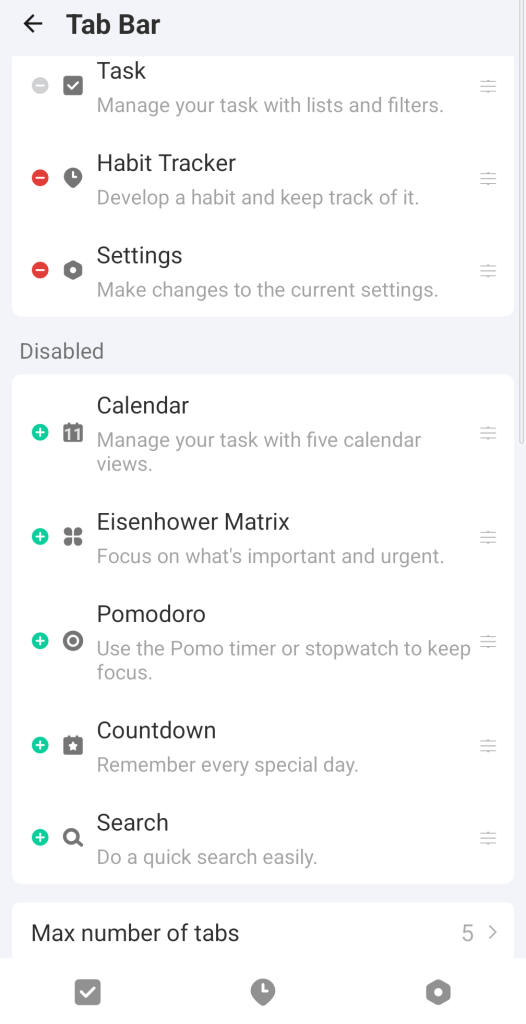
The modularity of TickTick is one of its greatest strengths, since you can make it as complex or as simple as you want.
However, this modularity can also make its interface appear cluttered and chaotic if you use all of its features.
Organization
Todoist organization
Todoist lets you organize your tasks in multiple ways:
- Inbox. Contains all tasks and sections that don’t belong to a project.
- Projects: such as Work, School, Family etc.
- Sections. These are basically lists within projects.
- Priority: from 1 to 4, where 1 is most urgent.
- Labels: custom labels you can attach to any task.
- Subtasks: divide a large task into multiple smaller tasks.
In other task management apps, this level of organization would make them very hard to navigate. This is because you would constantly have to move between different projects, sections or labels to find the tasks you want.
Todoist solves this problem through a powerful filter function that lets you combine multiple sorting options into a single filter.
For example, you can create a filter that only retrieves tasks in the Work project, have a priority of 1, and are labelled as “Reports”.
This filter function is unique to Todoist, and is incredibly useful for dedicated users that have dozens of active tasks all the time.
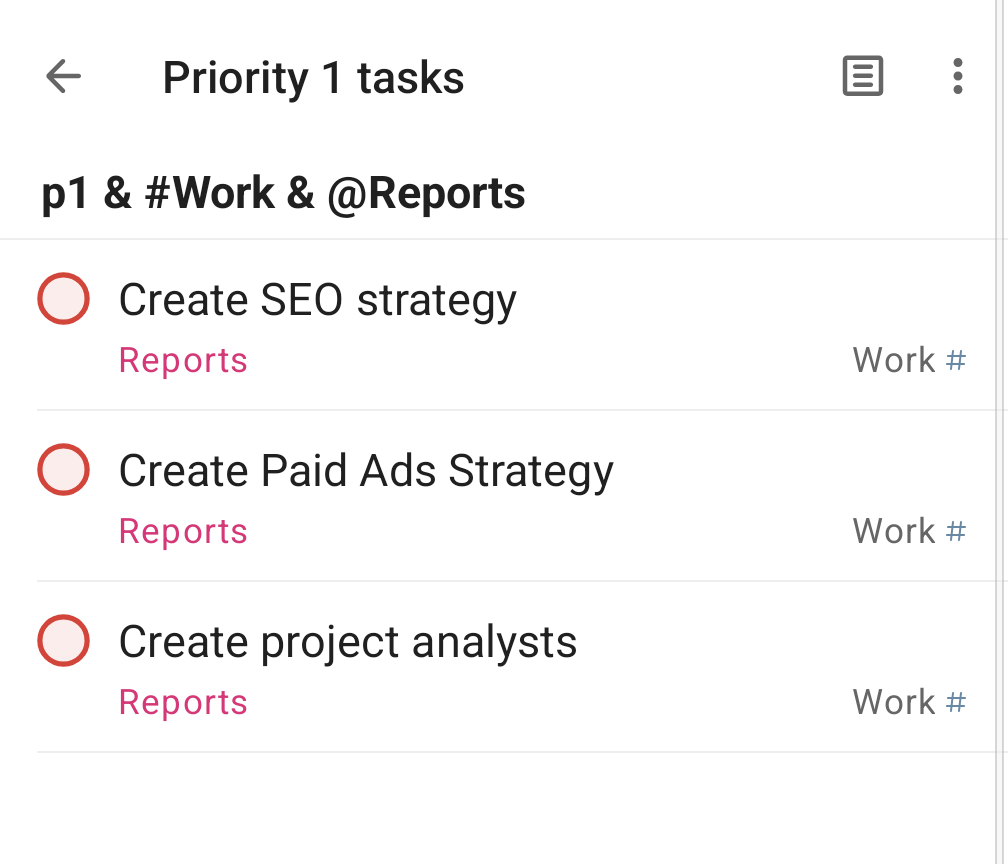
Finally, there’s also a search function that is buried deep within the settings of the app.
TickTick organization
TickTick lets you organize tasks in the following ways:
- Lists: such as Work, Personal, Inbox.
- Sections: sub divisions of lists.
- Priority: From High to No Priority.
- Labels: custom labels you can attach to any task.
- Subtasks: for simplifying a task into smaller steps.
If you want to save information, you can choose to convert a task into a note. This lets you write quickly write down a lot of information. It’s not as advanced as Evernote or Google Keep, but it’s great for saving information in the same place as tasks.
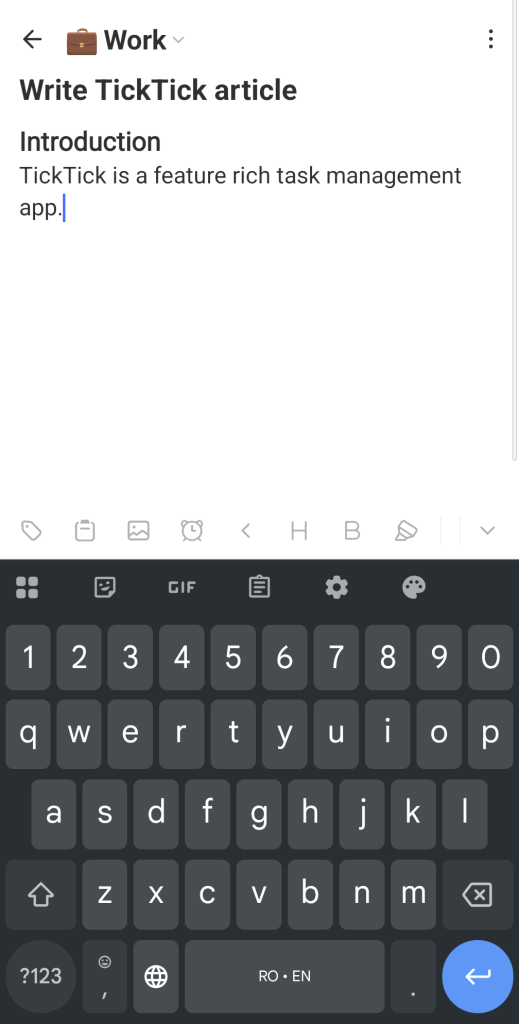
You can also attach checklists to individual tasks or subtasks, so you can better visualize all the steps required to complete the to-do.
The extra flexibility the features provide is great, but it does take a while to train your eyes so you can immediately recognize what is a task, what is a checklist, and what is a note.
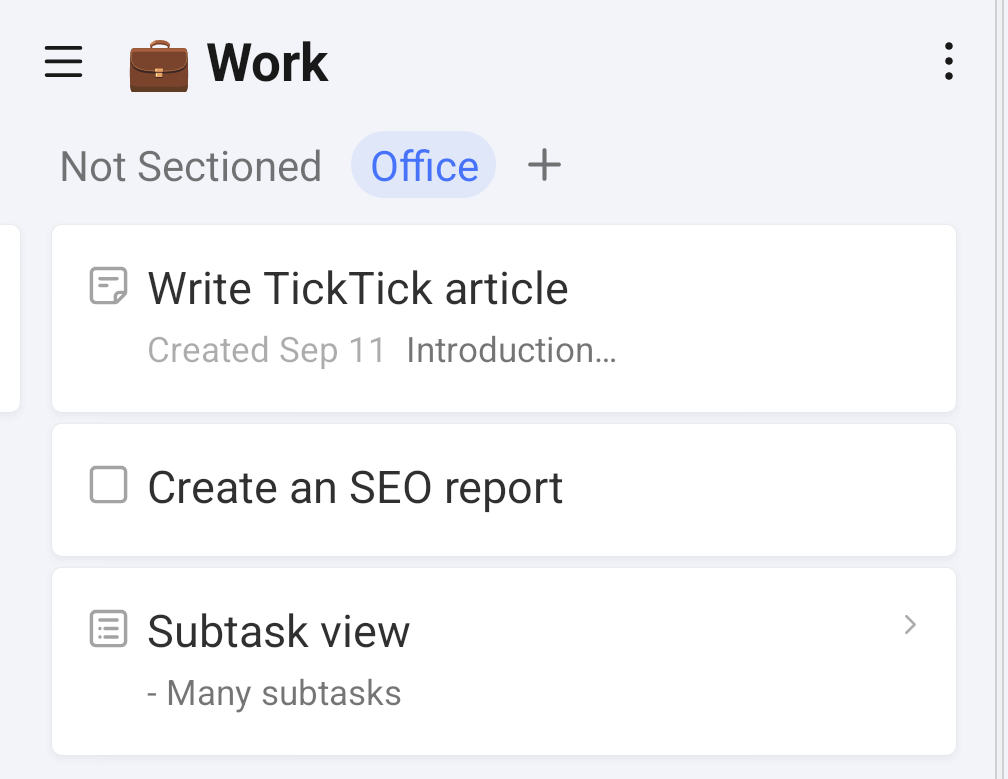
Overall, TickTick gives you lots of different ways to store your tasks and ideas, and then to organize each one into its own little corner.
Unfortunately, TickTick doesn’t have a search function or good filtering features. If you are an intensive user you have to properly organize and label your tasks, otherwise you risk having “orphan” tasks and projects that are hidden away and easy to forget.
Scheduling and reminders
Todoist scheduling and reminders
Todoist lets you schedule tasks that are one time only, or tasks that repeat themselves at regular intervals.
For repeating tasks, you can schedule them in lots of different configurations:
- Repeats every week, but only on Fridays and Saturdays.
- Repeats once every 3 months.
- Repeats every month on the same day (10th for example).
- Repeat every 2 months.
- Repeats every 3 weeks.
- Etc.
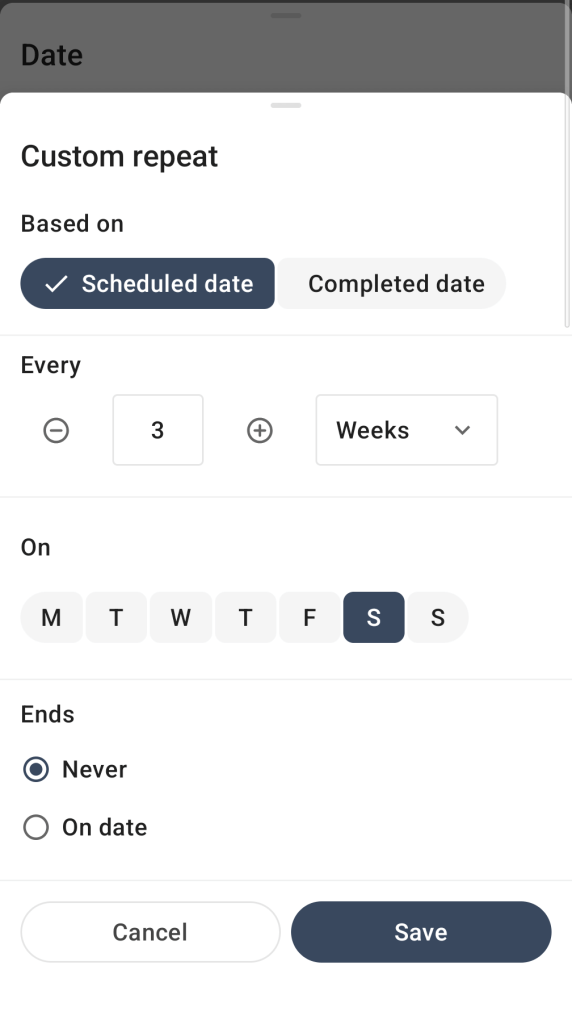
The paid version of Todoist adds other very useful reminder features:
- Extra reminders for a task (free version only allows 1 reminder per task)
- Deadline feature.
- Task duration for calendar view.
- Location reminder.
TickTick scheduling and reminders
Ticktick’s reminder features lets you schedule reminders for both one-time tasks, or repeating tasks.
For repeating tasks, you can schedule them to repeat in any time configuration you want:
- Repeats every day, except on weekends.
- Repeat every week, but only Monday and Tuesday.
- Repeat every month on the first workday etc.
- First workday or last workday of the month.
- Second or third Wednesday of the month etc.
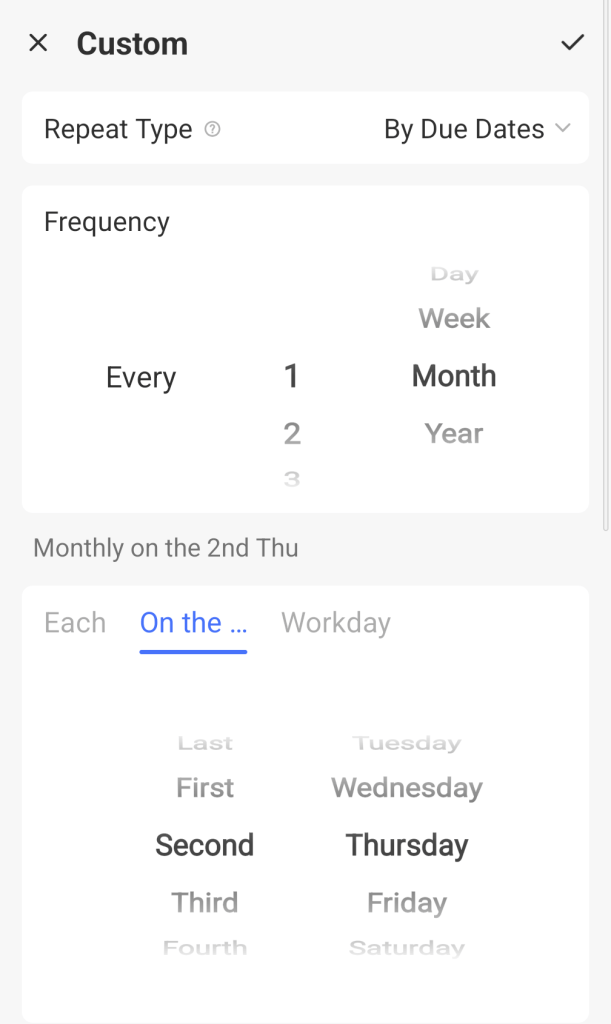
The paid version of TickTick adds more features such as:
- Constant Reminders. A reminder that stays active for 5 minutes (on Android) or non-stop (iOS) until manually stopped.
- Task duration for calendar view.
- Location reminders.
Calendar and other integrations
Todoist calendar and other integrations
Currently, Todoist integrates with Google Calendar and Outlook Calendar, but no Apple Calendar unfortunately.
This is a pain point for iOS users, but there are certain workarounds for this. For example, you can synchronize Google Calendar with Apple Calendar.
Afterwards Todoist tasks added to Google Calendar are automatically pushed to Apple Calendar as well. While not 100% perfect, it should be good enough in most situations.
However, Todoist has a big advantage over competitors because it has 80+ integrations with many other productivity programs.
For example, Todoist can integrate with:
- Note taking apps: Evernote, Capacities, Fireflies etc.
- Time tracking: 2Day, Toggl, Flowmo etc.
- Email: Gmail, Outlook, Spark, Airmail etc.
- Messaging: Slack, MS Teams.
- And many other integrations.
Todoist has so many integrations, it’s almost guaranteed you will find at least one that will fit your needs.
TickTick calendar and other integrations
Unfortunately, TickTick calendar integrations are only available on the paid version of the app.
This means the free version of TickTick doesn’t let you add new tasks and to-do’s on your Google, Outlook or iCloud calendar.
You can however allow TickTick to read and display events from your calendars inside the app.
Besides the calendars, TickTick also supports a handful of other major integrations such as: Notion, Gmail, Outlook and IFTTT.
AI Features and Integrations
Todoist AI Features and Integrations
The free version of Todoist doesn’t have any integration with AI/LLMs such as ChatGPT or Gemini.
To get an AI integration you’ll need a paid subscription, and even the AI feature will only work on the desktop version of Todoist (so not available on Android/iOS).
However, Todoist has an excellent system of natural language processing, which makes the need for an AI integration mostly obsolete.
Natural language processing allows a user to type a single, coherent line of text that the app intelligently understands and then sets the task title, but also its due date, project, labels, and priority level.
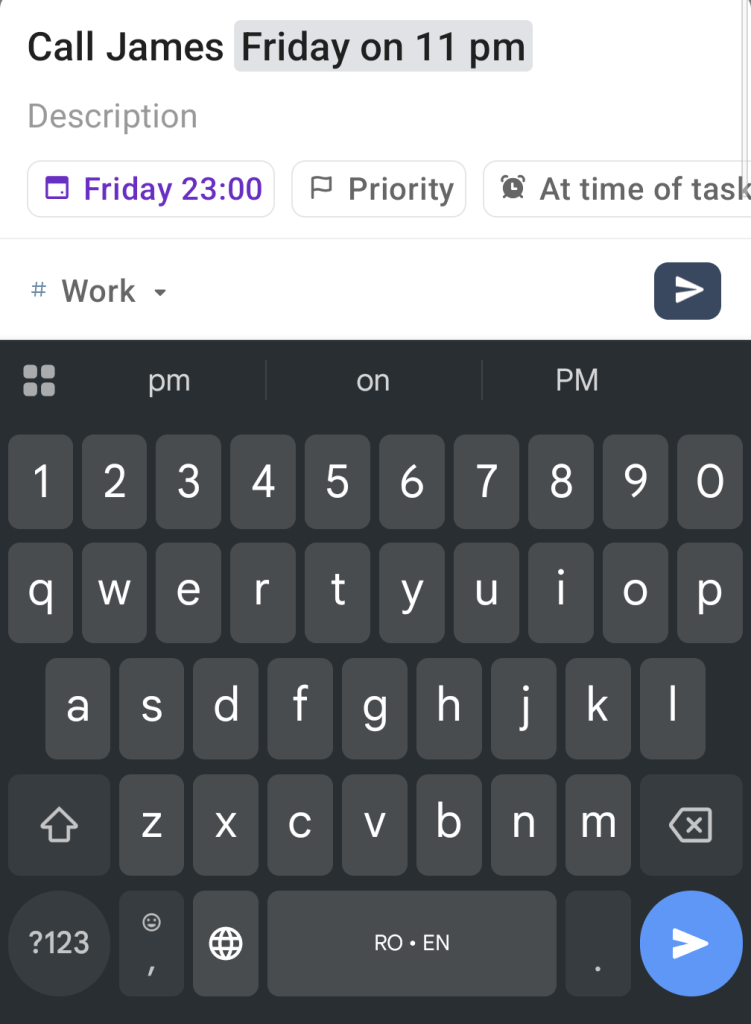
TickTick AI Features and Integrations
TickTick doesn’t natively support any integrations with AI/LLMs such as ChatGPT.
You might be able to improvise something using various tools such as IFTTT, but it’s not guaranteed it will work properly.
TickTick also has a very basic implementation of natural language processing. In theory, this feature should let you save tasks by writing them, and then having the app figure out the title, date, repeat times etc.
However, TickTick’s implementation is slow and doesn’t work that well, which is probably why the feature is turned off by default.
Special or unique features
Todoist special or unique features
Todoist has many interesting features built into the app. Here are the ones we think are most noteworthy:
- Natural Language Processing. This allows you to create and schedule tasks simply by writing what you need instead of pressing buttons and navigating menus.
- Powerful filtering functions. Todoist has the most powerful filtering and sorting function of any task management app we’ve tested. This can greatly help users who tend to have dozens or hundreds of active tasks.
- Karma score. Todoist’s Karma transforms productivity into a game. Users gain points when completing tasks, but lose points when tasks are overdue. As users accumulate points, they advance through eight distinct Karma levels, starting at “Beginner” (0-499 points) and progressing all the way to “Enlightened” (50,000+ points).
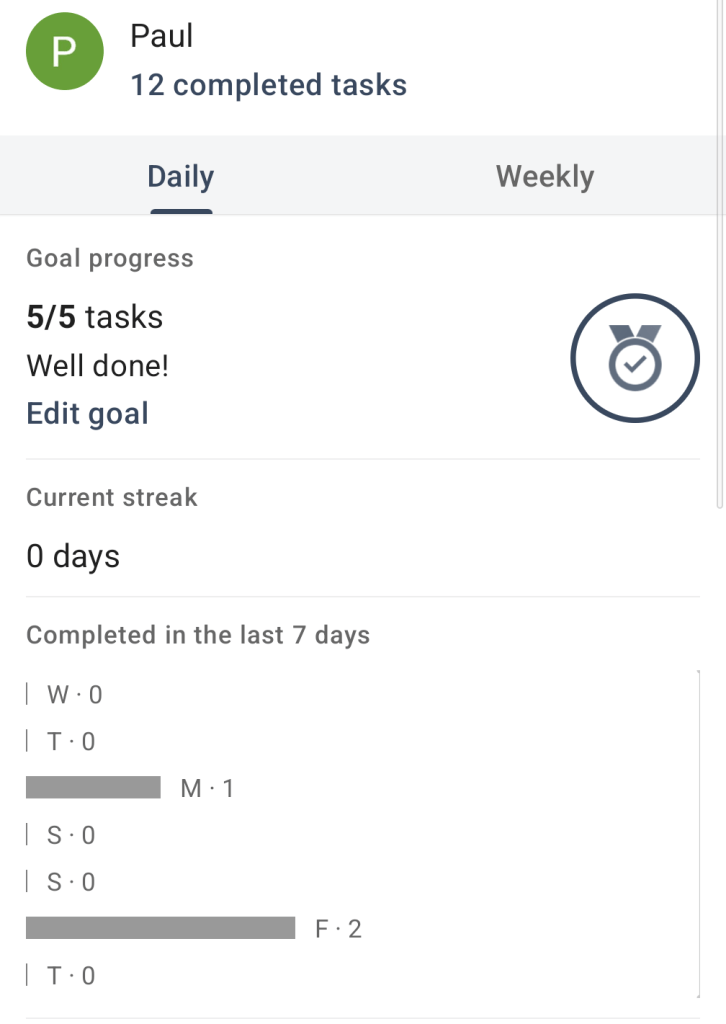
TickTick special or unique features
TickTick is a generalist to-do app that combines many different kinds of features into a single package. Out of all these features, these are the ones we like the most:
- Customization. In our experience, TickTick is the most modular and customizable to-do app on the market. You can make it as simple or as complex as you want.
- Notes and checklists. Great for users who want to add more context and information to their tasks.
- Various tools such as: Eisenhower matrix, habit tracking, Pomodoro focus timer, etc. TickTick is great for people that use these features, since it removes the need for installing multiple apps.
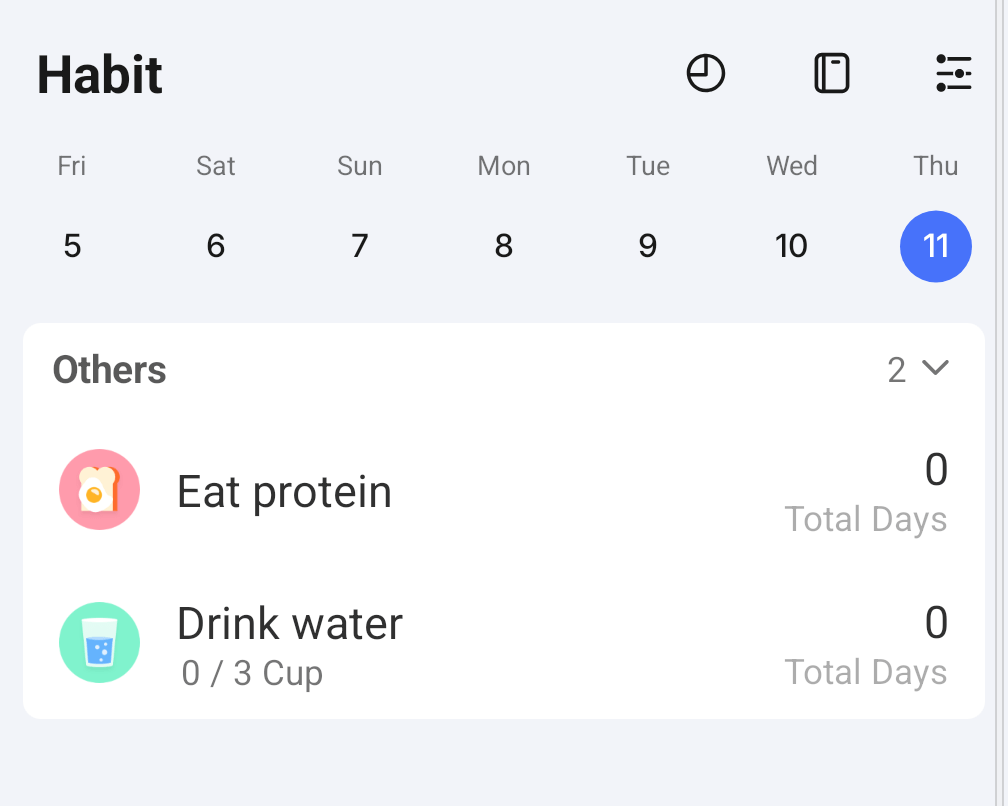
Cross-platform compatibility
Todoist cross-platform compatibility
Todoist can be downloaded on the following platforms:
- Desktop/laptops: Windows and macOS.
- Mobile: Android and iOS.
- Other: Android and iOS smartwatches.
Todoist also has web versions for both mobile and desktop.
TickTick cross-platform compatibility
TickTick is available for download on the following platforms:
- Desktop/laptops: Windows and macOS.
- Mobile: Android and iOS.
- Other: Android and iOS smartwatches.
TickTick also has a web version for both mobile and desktop.
Collaboration and sharing
Todoist collaboration and sharing
Todoist comes with many collaboration features, even in the free version.
To collaborate with someone, you create a project, such as “Work” and then invite someone else to edit that project.
The free version allows you to create 5 projects, and for each project you can invite up to 5 collaborators.
Todoist Business offers many common project management features such as: team projects, task comments, notes, file uploads etc.
That being said, Todoist Business cannot fully replace project management tools such as Trello or Asana because it doesn’t have many essential features such as: work boards, Kanban views, Gantt charts, workload views etc.
Todoist also doesn’t have many powerful automation features such as:
- Sending notifications to certain people, but only on certain channels.
- Real time collaboration on certain documents or projects.
- Deep integrations with CRMs such as HubSpot or Salesforce etc.
In general, the collaboration features found in Todoist should be sufficient for small teams and families, but anything larger than that requires a dedicated project management tool.
TickTick collaboration and sharing
TickTick offers a basic form of collaboration, where two or more users can work together to complete tasks found within a list.
Users can assign tasks to other users, and even comment on tasks to provide more information.
This is about the extent of TickTick’s collaboration features. In our opinion, they are sufficient for sharing tasks with family and friends, or even small work projects.
Pricing
Todoist pricing
The paid version of Todoist has two different subscription plans:
- Pro: $5 per month / $48 yearly ($4 per month).
- Business (per user): $8 per month / $72 per year ($6 monthly).
The paid version of Todoist unlocks numerous features:
- 300 personal projects (free version has 5).
- AI assistant.
- Deadlines feature.
- Custom reminders. Ability to add more reminders for each task.
- Deadlines.
- Task duration.
- Team collaboration (for business users).
TickTick pricing
The paid version of TickTick has a single subscription plan:
- Premium: $4 per month / $36 yearly ($3 per month).
The paid version of TickTick unlocks numerous features:
- More calendar views (monthly/weekly/day/3-day).
- Integrations with calendars from Google, Outlook, iCal etc.
- Notion integration.
- More attachments per day (99 vs 1 in free).
- More tasks per list.
- Etc.